We reach for the skies on this week's Naked Scientists, with High Altitude Adventures. We find out how the body reacts to the low oxygen at high altitudes, and join Laura Soul testing the theories on a trek up to Everest base camp. Plus, we find out how the continental collisions that made mountains may have plunged the Earth into an ice age. We also hear how the rate of mutation changes in lab-bench evolution, how looming sounds make our vision more sensitive, why poking a stem cell can change its fate and the chemistry behind the taste of fizz. In Kitchen Science, we make a mountain range from lard...
In this episode
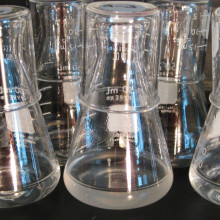
Evolution in a bottle
Evolution on a grand scale - the sort of evolution that produced humans from our monkey-like ancestors - takes millions of years. But although these kind of timescales can't be studied in the lab, researchers at Michigan State University have been running an evolutionary experiment over 21 years that shows natural selection at work.
The researchers periodically froze samples of bugs from the culture, and analysed them using modern gene sequencing technology. Although the study started 21 years ago, it's taken until now for genomic technology to be able to do justice to such an experiment.
By the 20,000 generation halfway mark, the scientists discovered 45 mutations in the surviving cells. And as you might expect, these mutations gave a survival advantage to the bacteria that carried them. The experiment also revealed interesting relationships between the speed at which organisms adapt, compared to the rate of mutation in their genomes. Lenski says "The genome was evolving along at a surprisingly constant rate, even as the adaptation of the bacteria slowed down a lot. But then suddenly the mutation rate jumped way up, and a new dynamic relationship was established."
The team found that a mutation involved in DNA metabolism occurred after around 26,000 generations, and this meant that the chances of mutations happening elsewhere in the genome rose dramatically - so by generation 40,000 there were 653 mutations, compared with the 45 found at the half-way mark.
Obviously, in only 21 years we're not going to see the evolution of anything other than slightly better bacteria. But the research could shed light on other situations where genomes evolve as organisms adapt - such as in the development of cancer, or microbial infections. And it could also be useful for industrial scientists who grow bacteria to produce enzymes and drugs, to improve the performance of their bugs.

Sneaky Sounds Enhance Eyesight
Some sounds, such as a speeding car or footsteps in a dark alley, actually improve our eyesight even before we are aware that we can hear them, according to research published in the Journal Current Biology. This gives us cause to rethink the idea that hearing and vision are handled separately in the brain at the input stage.
Gregor Thut, at the University of Glasgow and colleagues in both Glasgow and Lausanne, performed a series of experiments to look at excitability of the low-level visual cortex, and see if it was altered by hearing looming sounds. To do this, they used a technique called Transcranial Magnetic Stimulation - this uses rapidly changing magnetic fields to induce small currents in the neurons. This stimulation leads to the perception of flashes of light, a bit like those you see when you rub your eyes, in a process called Phosphene induction.
 In the presence of looming sounds, compared to control sounds, the perception of phosphenes was greatly and selectively enhanced, showing that these sounds do indeed alter the excitability of the visual cortex. They did see an increase in excitability when listening to stationary (constant volume) sounds, but looming sounds doubled the baseline phosphene perception. This increase in excitability actually happened around 35 milliseconds before the volunteers were able to discriminate the sound at all.
In the presence of looming sounds, compared to control sounds, the perception of phosphenes was greatly and selectively enhanced, showing that these sounds do indeed alter the excitability of the visual cortex. They did see an increase in excitability when listening to stationary (constant volume) sounds, but looming sounds doubled the baseline phosphene perception. This increase in excitability actually happened around 35 milliseconds before the volunteers were able to discriminate the sound at all.
A follow up experiment tried to see if this effect was just due to the increasing intensity (the sound getting louder) or the perception of a looming sound getting closer. Previous studies have shown that for a sound to feel like it's getting closer, rather than just louder, it needs to be a structured, rather than broadband sound. This means that if you generate white noise that gets increasingly loud, it won't feel like it's coming closer. Looming white noise increased visual cortex excitability, but only as much as the constant volume sounds.
This shows us that visual perception can be boosted by other senses in a preperceptive way - before we consciously realise what we're hearing - the brain acts in a multisensory but stimulus selective way. This challenges the current model of the brain, and according to Thut:
"The study shows how models of brain organisation and perception need to be changed to include multisensory interactions as a fundamental component."
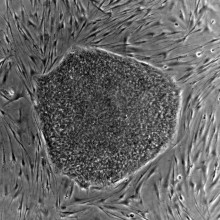
Stresses and strains shape embryos
Embryonic stem cells have been hot news in science for a while - these are the first cells that form in a developing embryo, just a couple of days after fertilisation. They're amazing little cells because they have the potential to become any type of cell in the body. And because of this property, scientists are trying to turn them into many different types of cells in order to repair diseased or worn-out tissues in our bodies.
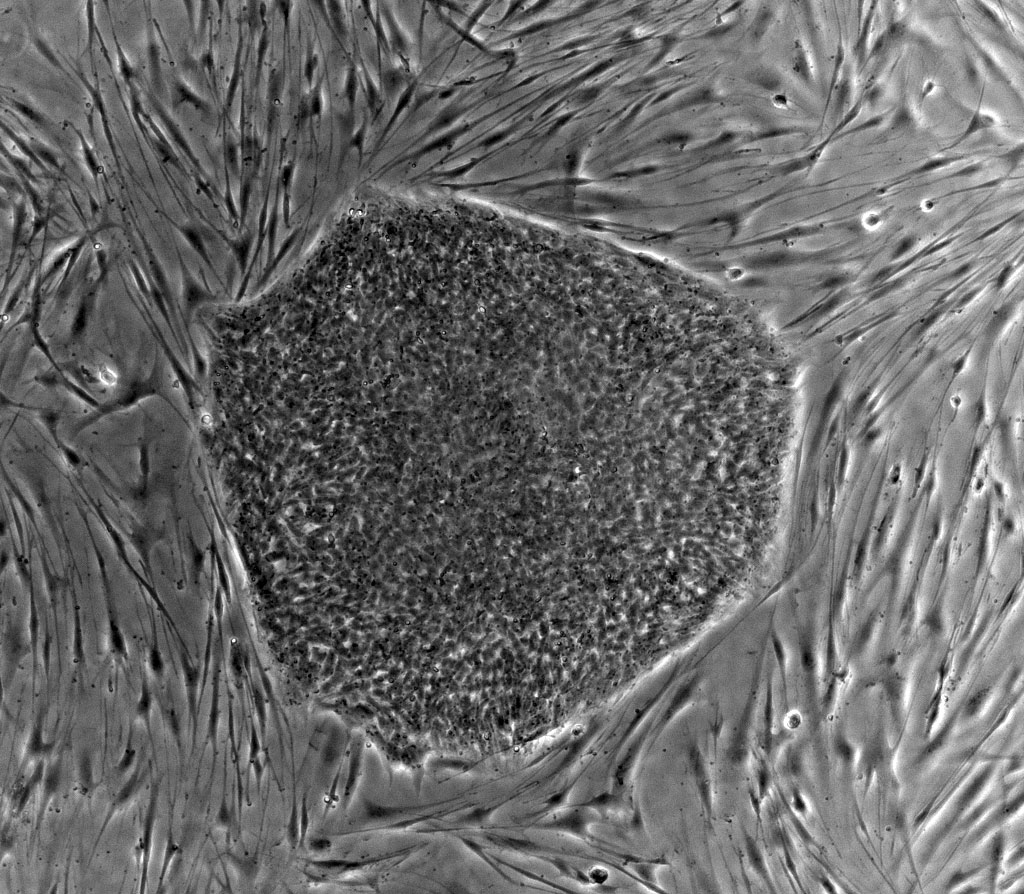 Researchers grow embryonic stem cells, or ES cells in the lab and treat them with various chemicals, or manipulate genes to get the cells to adopt different fates. But now scientists in Illinois have made an unexpected discovery - ES cells can be coaxed into certain fates by physical stresses and strains.
Researchers grow embryonic stem cells, or ES cells in the lab and treat them with various chemicals, or manipulate genes to get the cells to adopt different fates. But now scientists in Illinois have made an unexpected discovery - ES cells can be coaxed into certain fates by physical stresses and strains.
This is research published in the journal Nature Materials, from Ning Wang and colleagues, who were looking at the effect of forces on cells. To do this, they attached a single tiny magnetic bead to the surface of a living mouse ES cell, then put the cells into a tiny oscillating magnetic field, which made the bead move up and down - this mimics the natural forces within in cell, such as the movement of little motor proteins. This set-up meant they could measure the mechanical force being applied to the cell, and how soft the cells are.
The scientists found that the ES cells were much stiffer and more sensitive to the movements than more advanced cells that had started to adopt specific fates. For example, muscle cells were much stiffer than the ES cells. They also went on to look at the effects of physical forces on the activity of different genes in the cells. And they found that applying movement to ES cells caused them to switch off the activity of certain genes, some of which control what type of cell the ES cell will become.
At the moment, the research has only been done using mouse ES cells, and we don't know if human ES cells will respond in the same way. But it could provide a useful way of persuading cells to adopt certain fates, which might be useful for doctors looking to replace damaged or worn-out cells. And if the technique is shown to work in actual living embryos, it might be possible to alter the fate of specific cells at an early stage - say in the case of certain developmental defects - without affecting neighbouring cells.
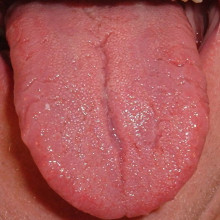
The Taste of Fizz
The experience of drinking a fizzy drink is both a physical and chemical experience, and now researchers have discovered just what happens when the bubbles hit your tongue.
Reporting in this week's Science, Jayaram Chandrashekar and colleagues from the Howard Hughes Medical Institute at the University of California, San Diego, along with collaborators at the National Institute of Dental and Craniofacial Research in Bethesda & the St. Louis School of Medicine, show that the cells on our tongues that sense sour flavours are also responsible for tasting carbonation, and identify the gene responsible.
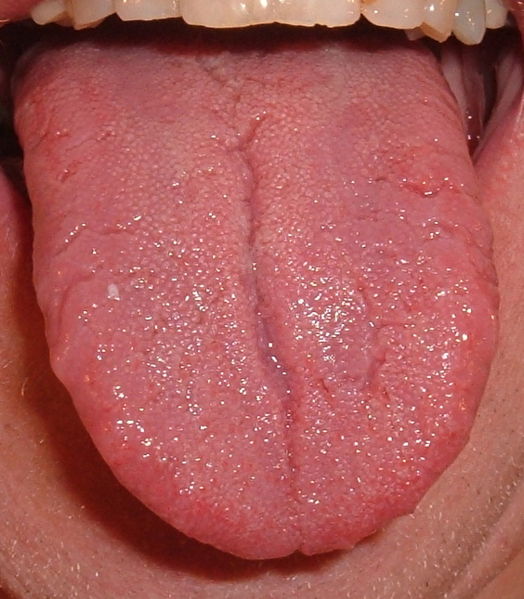 Humans, and many other animals, detect five distinct flavours - bitter, sweet, salty, sour and umami. Different cells on the tongue are responsible for each of these through different chemical mechanisms. The taste system is also responsive to CO2 through a number of pathways - nociception (identification of noxous stimuli) olfaction, chemoreception (the same pathway which regulates CO2 in our breath), but until now little has been known about the taste of CO2.
Humans, and many other animals, detect five distinct flavours - bitter, sweet, salty, sour and umami. Different cells on the tongue are responsible for each of these through different chemical mechanisms. The taste system is also responsive to CO2 through a number of pathways - nociception (identification of noxous stimuli) olfaction, chemoreception (the same pathway which regulates CO2 in our breath), but until now little has been known about the taste of CO2.
By genetically deactivating specific sets of taste receptor cells in mice, they were able to show that mice lacking the cells for detecting sourness were completely unable to detect CO2. These cells express an ion channel called PKD2L1. They then looked for candidate genes which were highly specific for cells expressing this ion channel protein.
The researchers identified a gene, called Car4, which was highly specific for these cells and codes for an enzyme called carbonic anhydrase 4, part of a family of enzymes known to respond to, act on or sense CO2. Knocking out this gene produced mice who could taste sour foods, but who didn't respond fully to CO2.
Carbonic anhydrase catalyses a reaction that turns carbon dioxide and water into bicarbonate and free protons. Bicarbonate doesn't react with taste receptors, so we must assume it's the free protons responsible for activating the sour taste cells.
But why can we taste carbon dioxide at all? The authors suggest it may just be a coincidence, and the enzyme is really there to maintain pH balance in taste buds, but evidence of specific CO2 taste detection in insects may suggest that this has evolved as a means to detect fermenting food.
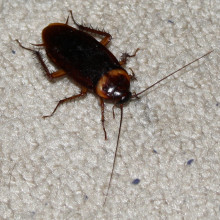
14:26 - Giving Insects the Slip
Giving Insects the Slip
with Dr Jan-Henning Dirks, Cambridge University
Kat - Also this week, researchers at Cambridge University have developed a new insect repellent coating which could help to reduce a threat of cockroaches. Now for many of us, insects are just kind of a bit of a pest. They get in your picnic. But insect infestations are responsible for billions of pounds worth of damage across the globe every year. Now we're joined by Jan-Henning Dirks from Cambridge University. So, tell me a bit about what the problem is with insects and then how you've tried to counteract this.
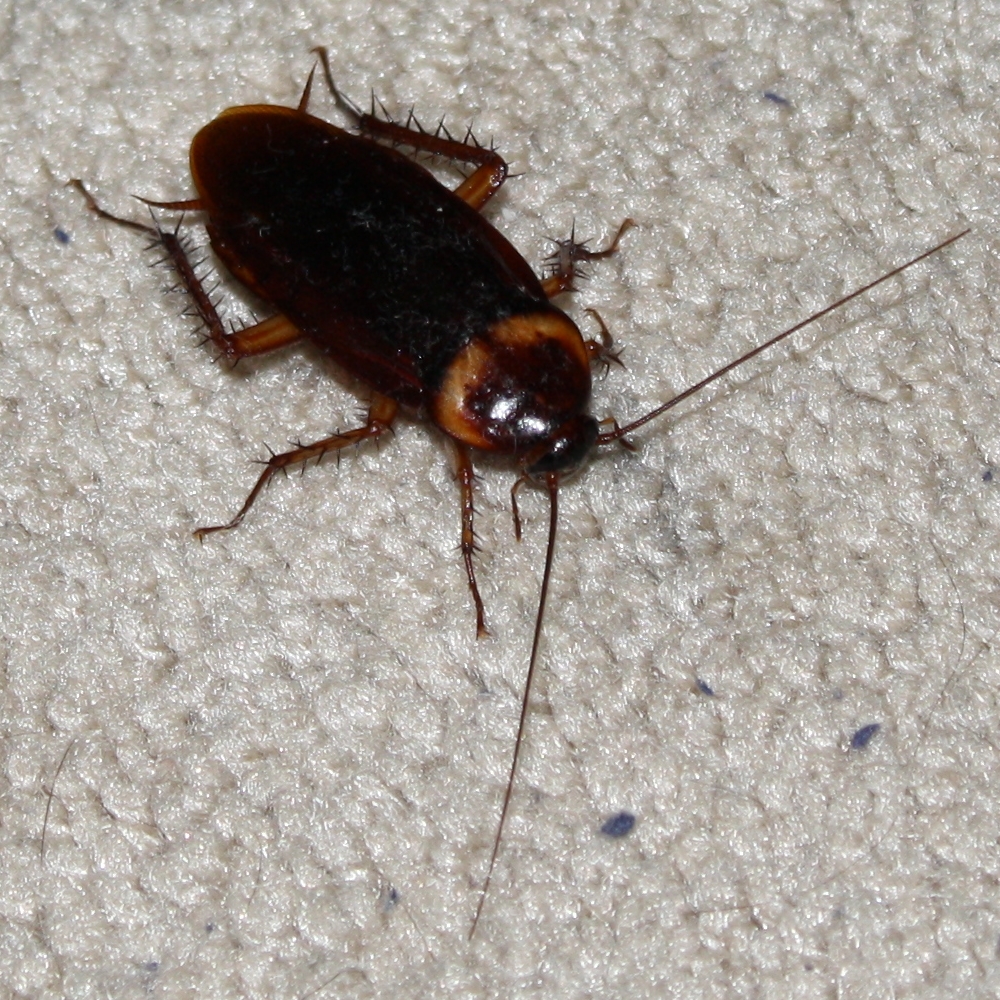 Jan - Yeah, well the problem with insects is that they amazingly well stick to all kinds of surfaces. As you look around you, you see them basically clinging to the mirror, clinging to the window, holding on to everything and holding on very, very tight. And so, for us, this is a more scientific problem to understand how this actually works. So at the Insect Biomechanics Workgroup here in Cambridge, we were trying to figure out what makes insects so incredibly good at sticking to different kinds of surfaces and whilst we were exploring this, we found a surface that can help you prevent your house and your belongings, and probably even your lab from crawling insects.
Jan - Yeah, well the problem with insects is that they amazingly well stick to all kinds of surfaces. As you look around you, you see them basically clinging to the mirror, clinging to the window, holding on to everything and holding on very, very tight. And so, for us, this is a more scientific problem to understand how this actually works. So at the Insect Biomechanics Workgroup here in Cambridge, we were trying to figure out what makes insects so incredibly good at sticking to different kinds of surfaces and whilst we were exploring this, we found a surface that can help you prevent your house and your belongings, and probably even your lab from crawling insects.
Kat - So how does this surface work? Because we have nonslip surfaces, things like PTFE that we cover non-stick pans with. Why is your surface different? How does it work?
Jan - Well, our surface is completely different to all other insect repellents that you know. Because if you look around you, all insects that you can see, they have sweaty feet actually, so they have it...
Kat - Nice...
Jan - They do, yes. And you can even write your PhD about it! And so, the foot sweat that they have that helps them to stick to surfaces and our technology does something very new. It basically - it tricks the insect's feet. It makes them lubricate their own feet. Other repellents that you see, they work, like, they are sticky themselves so you know, these fly tapes that capture flies or some people who insects at home, they know that. They have this surfaces that erode and make the feet dirty. But our technology is like a selective sponge that removes something from the insect's adhesive fluid and what's leftover, makes the insect's feet slip.
Kat - So, instead of having sort of a sticky glue that they're sticking on the wall with, suddenly they're going, "Wooh!" and sliding off.
Jan - It's very similar. So they don't really have the sticky substance at first. It's more like ketchup or custard. It's one part of it is oil and the other part is water. And together, it works very similar to ketchup. But if we remove the water, that's what our surface does, then what's leftover is the oil on that then make insects slip.
Kat - And tell me a bit more about the surface. I mean, what sort of things can we coat with it? Is it very pliable?
Jan - So, that's what we're exploring right now. So in theory, you can apply the surface to a very, very many kinds of different substances. Right now, we're exploring and that's why we're looking for commercial partner to make this really available for everyone so they can coat whatever they want with it and make insects slip from the barbecue or from where they don't want insects to be.
Kat - Fantastic. Well, I'm looking forward to an non-insect to non-stick picnic camp and that would be fantastic. That was Jan-Henning Dirks from Cambridge University.
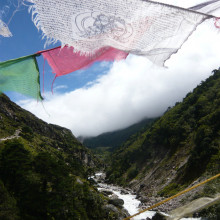
17:17 - The Effects of Altitude
The Effects of Altitude
with Dr Andrew Murray, Cambridge University
Andrew - Oxygen is absolutely critical for almost every process in the body. Just about every tissue uses oxygen to make energy in the form of ATP, the universal energy currency of the cell. And if oxygen levels fall, the amount of ATP that can be produced and the amount of energy available to the cell is reduced. So you find it very much harder to do exercise work which requires ATP because you got less oxygen to make it.
Laura - The longer you stay at higher altitudes, the more you get used to it. How does the body begin adapting to that?
Andrew - Okay, so there's several adaptations you see and they all occur over different timeframes. So, first of all, your heart will start beating harder. The reason for this is that it wants to deliver more blood to the muscles, the blood carrying the oxygen. So you pump more of that blood to the muscles to maintain the oxygen supply so you can do the work. The other change that you'll see is you start breathing harder to get that oxygen into your blood. Over longer terms or medium terms rather, you'll start to see an increase in red blood cells in the blood of people adapting to altitude. The red blood cell, the erythrocyte is what carries the oxygen in the blood. So by increasing the amount of blood, you increase the oxygen-carrying capacity, of course this makes the blood very thick, and so it can also be slightly detrimental and it becomes very viscous, very hard to push through the capillaries into the muscle. More long term changes that you start to see, your breathing rate returns to normal. Your red blood cell mass stays high but the signs are that there's other changes going on. And actually, we don't know a great deal about this, what's actually happening in the muscles themselves. We think it could be more blood vessels delivering oxygen to the muscle or it could be changes within the tissue itself, in the way that the muscle metabolism uses oxygen to make energy. It could become more efficient or it could use other metabolic pathways that are not dependent on oxygen.
Laura - Is there any height at which the human body cannot adapt to high altitude?
Andrew - Absolutely. As part of our expedition in 2007, my colleagues and I took blood samples from very high on the mountain. We took samples as high as 8,400 meters and interestingly enough, we found that even up to about 7,000 meters, the blood oxygen content was maintained by which I mean, you had more red blood cells, each of them was carrying less oxygen. But the fact that there was more of them and that the total amount of oxygen in your blood was the same. But above 7,000 meters and certainly above 8,000 meters, this began to fall. This area is known as the death zone by climbers and you really don't want to spend too much time there for obvious reasons as its name would suggest. But above around 7,000 meters, the body could no longer adapt and the amount of time you can spend there is limited.
Laura - One thing that you can test to see how your body is adapting is the alkalinity of your urine. Why does that change?
Andrew - Okay, so one of the initial changes is you start breathing very hard and this is triggered by a low oxygen level in your blood. Your chemoreceptors which monitor oxygen and pH sense that oxygen levels are falling and you start breathing hard. Now one of the problems of breathing hard as well as bringing in more oxygen is that you breathe off carbon dioxide. So you decrease the amount of carbon dioxide in your blood and carbon dioxide is acidic. If your blood then becomes very alkaline, this triggers other chemoreceptors to say, "Woh! Stop breathing. You're breathing far too hard." You get very sporadic breathing patterns and this particularly happens when you're asleep and you haven't got conscious control of your breathing. So this is known as Chain-Stokes breathing. So, you might be breathing very hard one minute and then suddenly you'll stop breathing and you'll wake yourself up, thinking that you're drowning in your sleeping bag and try to rip it off you. Can be very scary, but it's even more scary for your tent-mate who thinks you're having a heart attack and are about to die in the middle of the night. So one way the body adapts to this is to reduce the alkalinity of your blood by excreting bicarbonate which is alkaline. The kidneys do this job very effectively, putting the bicarbonates into your urine and then your urine becomes very alkaline. Of course, the side effect to this is that you need to pee a lot. So you'd be waking up a lot in the middle of the night and getting up and going to the loo especially your first night there.
Laura - A very interesting thing that changes at altitude is your sense of smell. Is there an understanding of why that occurs?
Andrew - So my understanding is that there's two possible causes of this and we aren't absolutely sure which of these is the true explanation. Yes, your sense of smell is definitely decreased and it could be because the chemicals that are flying around in the air that are picked up by our olfactory nerves, those chemicals are more dispersed in the thin air. The other possibility is that certain neural pathways might be down-regulated and therefore, the sense is impaired. These neural pathways obviously require a huge amount of energy, which requires a huge amount of oxygen, so by downregulating these pathways, just a little bit, you might save you just enough oxygen to survive at higher altitudes.
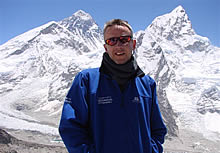 Laura - There's very severe effects that can sometimes happen when people are at high altitude, altitude sickness. Why does this happen and what are the signs of that?
Laura - There's very severe effects that can sometimes happen when people are at high altitude, altitude sickness. Why does this happen and what are the signs of that?
Andrew - So, there's various degrees of altitude sickness. At the low-end, there's a high altitude headache that you will get and everybody will get this at some stage. If this isn't monitored carefully, it can develop into AMS or Acute Mountain Sickness. When you start to see quite a severe headache, you get nausea, vomiting, you become disorientated. We're not entirely sure why this happens, but it's probably due to a lack of oxygen really being delivered to the brain and these are various neural pathways which are basically telling your body that it's not in a good place at the moment. A more severe altitude sickness can be High Altitude Cerebral Oedema or High Altitude Pulmonary Oedema. So that's either water retention of the brain or on the lungs, in the case of pulmonary oedema, HAPE or HACE. And these are extremely severe. People do die of these. All climbers going above base camp or even at the kind of base camp level need to be monitored carefully for any signs of HAPE or HACE and if any appear, the only solution is descend, descend, descend. Why they occur and why they occur in some individuals and not others is not really clear. Certainly, aspects like physical fitness at sea level are not good predictors of altitude sickness and in fact, the only predictor of how well somebody will do with altitude is how well have you done on previous trips to altitude. If somebody has done well previously, they're likely to do well again. If they've done badly previously, they are likely to do badly again which suggests there's certain genetic factors, what the genes are that regulate this, we don't know, but work is again ongoing.
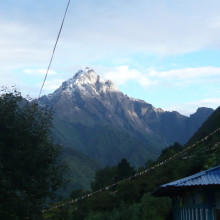
24:15 - Trekking to Everest Base Camp
Trekking to Everest Base Camp
with Laura Soul
Ben - While Laura was on her high altitude adventure, she decided to monitor what happened to her body by doing a series of experiments on herself and on her brother (who wasn't always the most cheerful volunteer). She measured heart rate, blood oxygen content, urine pH, and her sense of smell. She also recorded an audio diary for us. I caught up with her once she got back into the country to find out just how her experience had been...
Laura - It was actually a really amazing experience. I really enjoyed myself. It was hard work, it took a very long time, but it was definitely worth it.
Ben - So first of all, how high is Everest base camp?
Laura - Base camp itself is at 5,300 meters, but the highest we went while we were going up there was 5,450 meters.
Ben - So, although it is called base camp, people shouldn't be fooled into thinking that it's at the bottom of the mountain.
Laura - No. It's certainly very high up, especially compared to where we live here at Cambridge which is sea level.
Ben - Well, let's have a listen to the first part of your audio diary.
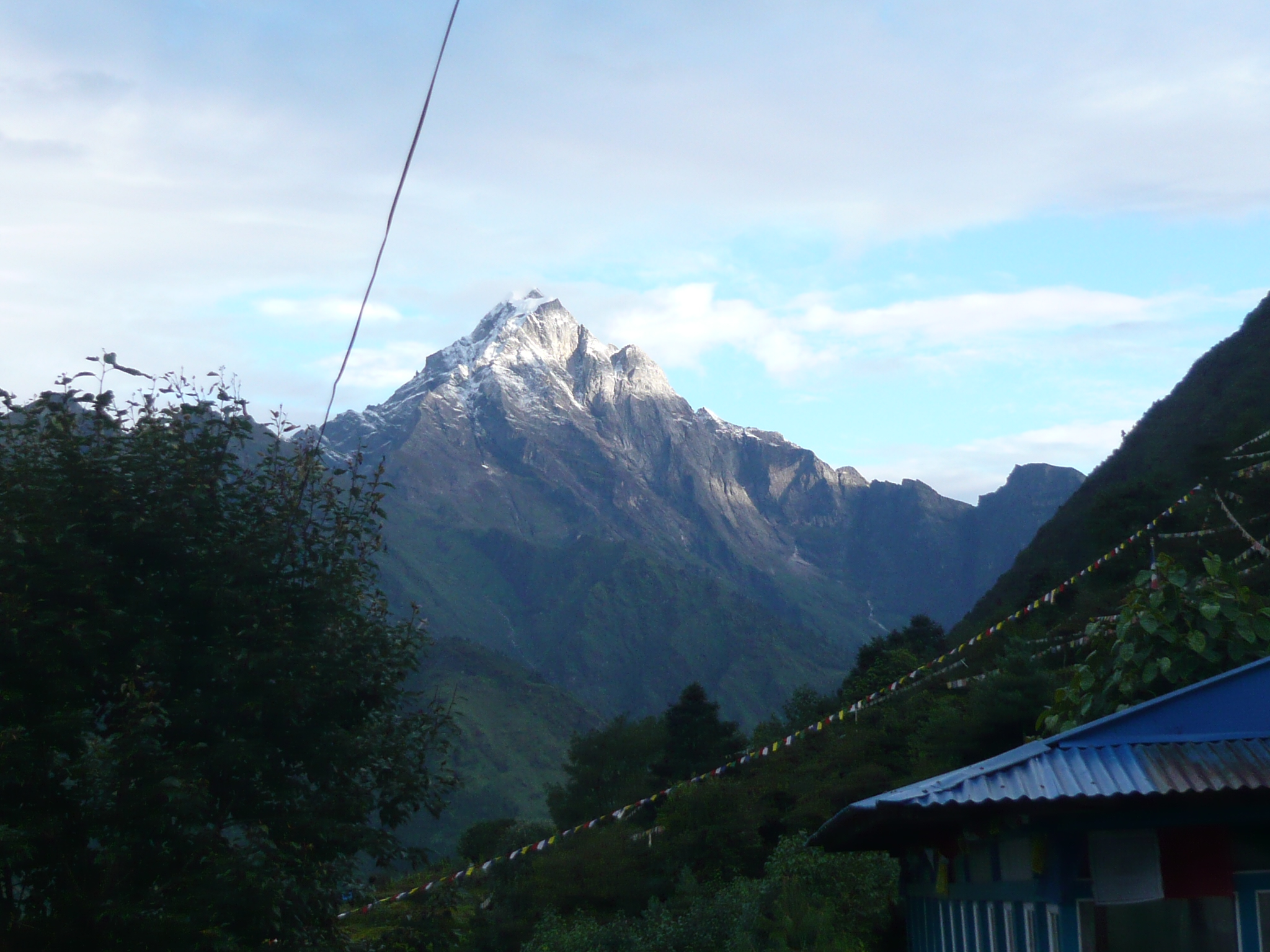 Laura - We've now arrived in Phakding which is at 2,652 meters. Some of the views up here have been absolutely spectacular. You can see the deep gorges and the high rising peaks, typical of the Himalayas. Unfortunately, for a lot of the day, it's been quite cloudy and has been raining fairly solidly all day which is a shame. But we've still being able to see a lot and it's been an amazing experience. This morning we flew in via a two propeller plane into Lukla. It was a fairly terrifying experience. The runway is 60 meters higher at one end than the other, but it has to be because it's so short. It has to slow the plane down by going uphill. Lukla's at 2,800 meters and Phakding's at 2,652 meters so we're arriving higher and sleeping lower which is the recommended course that you take when you're going to higher altitudes, to allow you to acclimatize to the altitude more effectively. At this height, I haven't noticed that much difference. You are a bit more out of breath as you are climbing uphill. But other than that, everybody seemed fine.
Laura - We've now arrived in Phakding which is at 2,652 meters. Some of the views up here have been absolutely spectacular. You can see the deep gorges and the high rising peaks, typical of the Himalayas. Unfortunately, for a lot of the day, it's been quite cloudy and has been raining fairly solidly all day which is a shame. But we've still being able to see a lot and it's been an amazing experience. This morning we flew in via a two propeller plane into Lukla. It was a fairly terrifying experience. The runway is 60 meters higher at one end than the other, but it has to be because it's so short. It has to slow the plane down by going uphill. Lukla's at 2,800 meters and Phakding's at 2,652 meters so we're arriving higher and sleeping lower which is the recommended course that you take when you're going to higher altitudes, to allow you to acclimatize to the altitude more effectively. At this height, I haven't noticed that much difference. You are a bit more out of breath as you are climbing uphill. But other than that, everybody seemed fine.
Ben - So, although you are at altitude, it doesn't sound like you're really feeling any of it. Did your experiments show any physiological changes?
Laura - Yes. They actually did. Even though we didn't necessarily notice the change ourselves. Oxygen blood level had dropped down to about 97% of what it normally is and our resting heart rates had increased by maybe 10 or 20 beats per minute.
Ben - So there are certainly physiological effects already, but it sounds like it's not really stopping you from moving on?
Laura - No. Not at all. I mean, it's hard work. It's a hard walk, but you take it so slowly to try and prevent altitude sickness. No, we weren't feeling anything at that stage.
Ben - Okay. Let's have a listen to the next stage of your walk.
Laura - Today, we walked from Phakding to Namche Bazaar which is at 3,446 meters which means an increase of 794 meters. The climb was pretty steep the whole way and it was quite tough. What was perhaps most disconcerting was that sherpas often happily walked past us, having no trouble at all when they were carrying up to 80 kilograms sometimes. We've now started to see the effects of altitude. You do get more out of breath doing things. It is harder and you are more tired. By the end of the day, the whole group pretty much was completely exhausted. However, nobody is ill yet. Everybody is feeling well and happy and is looking forward to our rest day which allows us to acclimatize to the altitude tomorrow.
Ben - Now that sounds like that was an enormous change in altitude in one day. Seven hundred ninety four meters.
Laura - Yes. It really was a big jump up that day and it was quite hard work and you really saw it in the experiments that we were doing. My blood oxygen level had dropped down to about 90% of what it normally is which is quite a big difference.
Ben - But by the sounds of it the following morning, you really got a glimpse of what it was that you were aiming for.
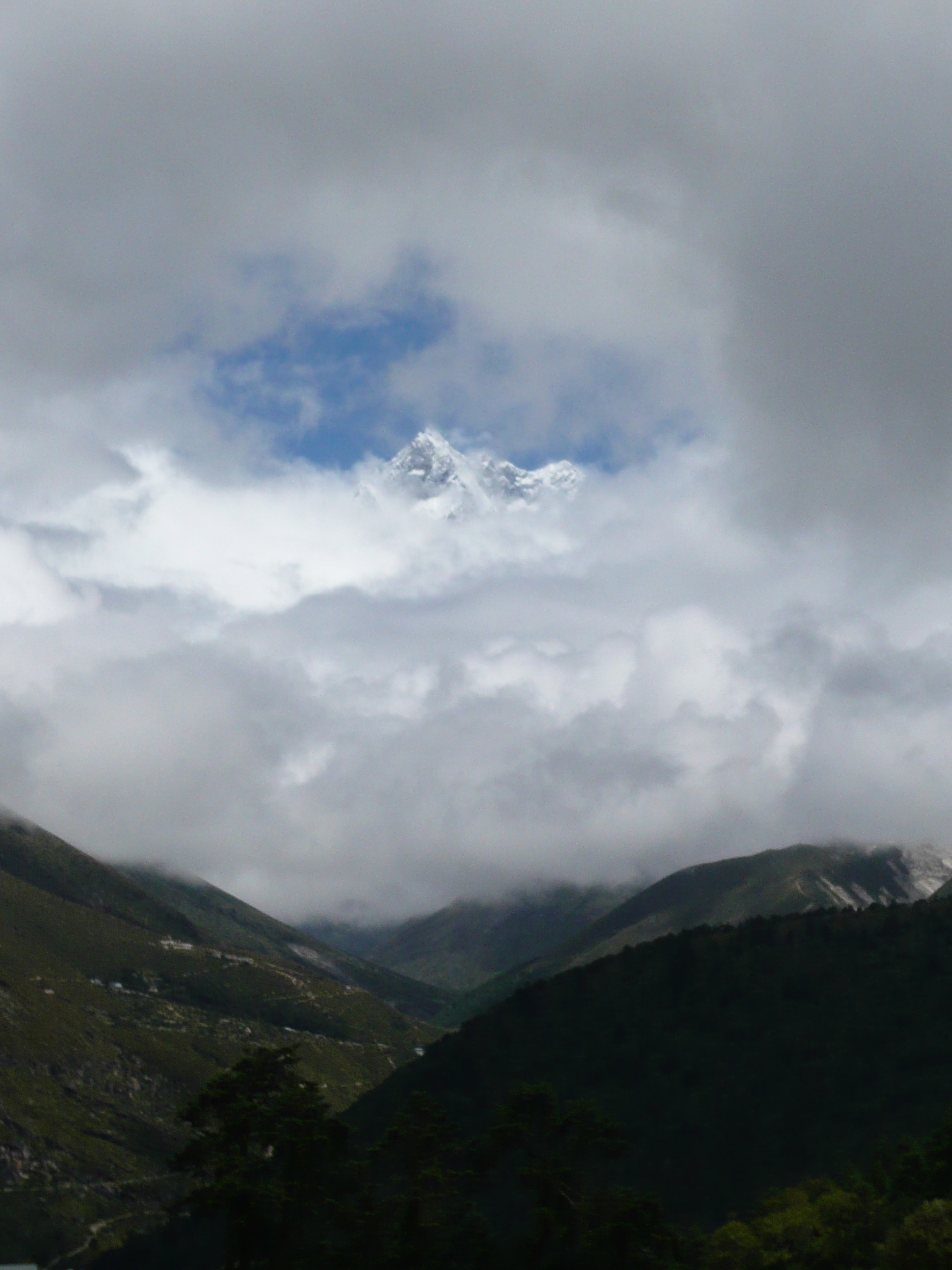 Laura - This morning, as we left Namche Bazaar, the sun was out and we got our first glimpse of Mt. Everest. Unfortunately, it did only last for about 5 minutes before acloud came across, but we could still clearly see Lhotse, the mountain next to Mt. Everest which is also higher than 8,000 meters. The morning's walk was quite flat. There weren't really very many up or down sections and the sun was out which made it quite pleasant. However, after lunch, the rain set in and we had to walk up a steep hill for about two hours. A few people were starting to get headaches, me included, but nothing that an aspirin couldn't get rid of. We've now reached Dingboche which is the cultural and religious centre of the Khumbu region. Dingboche is at 3,810 meters which is an increase of 364 meters from Namche Bazaar where we were staying last night. This is a relatively small jump compared to some of the other ones that we've done. However, as you get higher, the tougher each small jump becomes. The one thing that we are all noticing is that we tire out a lot more quickly than usual. There's less oxygen up here which makes everything a lot harder work.
Laura - This morning, as we left Namche Bazaar, the sun was out and we got our first glimpse of Mt. Everest. Unfortunately, it did only last for about 5 minutes before acloud came across, but we could still clearly see Lhotse, the mountain next to Mt. Everest which is also higher than 8,000 meters. The morning's walk was quite flat. There weren't really very many up or down sections and the sun was out which made it quite pleasant. However, after lunch, the rain set in and we had to walk up a steep hill for about two hours. A few people were starting to get headaches, me included, but nothing that an aspirin couldn't get rid of. We've now reached Dingboche which is the cultural and religious centre of the Khumbu region. Dingboche is at 3,810 meters which is an increase of 364 meters from Namche Bazaar where we were staying last night. This is a relatively small jump compared to some of the other ones that we've done. However, as you get higher, the tougher each small jump becomes. The one thing that we are all noticing is that we tire out a lot more quickly than usual. There's less oxygen up here which makes everything a lot harder work.
Ben - So, even though the altitude change is a lot smaller than the previously walk, it sounds like it's getting a lot harder.
Laura - Yes. It definitely was. We were really beginning to feel it. And that afternoon in particularly, when the weather set in and we were essentially walking up steps on what was almost a vertical cliff phase, it was very much hard work.
Ben - And your experiments reflected this increased effort?
Laura - Yes. Again, as Andrew Murray suggested, oxygen levels were dropping right down and our heart rates were shooting up again.
Ben - But the tough climbs don't stop there.
Laura - Today, we stayed in Pheriche again. But to try and prepare us for the rest of our journey, we had an acclimatization day which meant climbing up a nearby hill which went up to 5,100 meters. Probably about halfway up, I started getting quite a bad headache. We had the option of going to about 4,900 or carrying on for the final 200 meters and quite a few people, me included, stopped at 4,900. We'd been told that a headache doesn't really matter as long as it stays at the front of your head. It's when it goes around to the back of your head, that it becomes dangerous. Also, according to our guide Zanger, it's all about your mental attitude. The more you worry, the more you stress, the more you think about things while you're walking, the more likely you are to get headaches, to feel nauseous, to get altitude sickness in general. And although I do have a very bad headache now, I have to say that having taken his advice so far, it usually does seem to work and is certainly a lot easier to sleep.
Ben - So, Andrew Murray was saying that sleep would be interrupted because of this strange breathing pattern. Did people start to experience that?
Laura - Yes. At this stage, there were a lot of people commenting that they were having trouble sleeping, that they kept waking up in the night, and they couldn't work out why. And actually, when you could hear the breathing patterns of people nearby you when they were sleeping, you could definitely notice that there were these short little breaths and then the large gasping breaths, and then their breathing would just cut-out completely which was a bit scary, but it was really interesting.
Ben - And it sounds like trying to relax and not think about it really helped.
Laura - Yeah, I really found that just letting my worries float away and not thinking about anything really made me feel a lotbetter. I mean it's part of the Nepali philosophy, just everybody chill out and relax.
Ben - So, with that in mind, you got your heads down, thought about nothing, and carried on walking.
Laura - So today, we've walked up to Lobuche which is at 4800 meters. It was a very tough climb despite the fact that we had the acclimatization day the day before. I think having pushed myself quite hard yesterday, it's left me with a headache today, especially because I've been worrying about it. The other things is, up here, it's suddenly noticeably colder for the first time. Other people are really starting to feel the effects of altitude as well, more and more of the group are getting headaches, although no one's had any serious problems yet, thankfully. One thing people are definitely noticing is that you have to go to the toilet much more than you usually do and it's a lot harder to sleep.
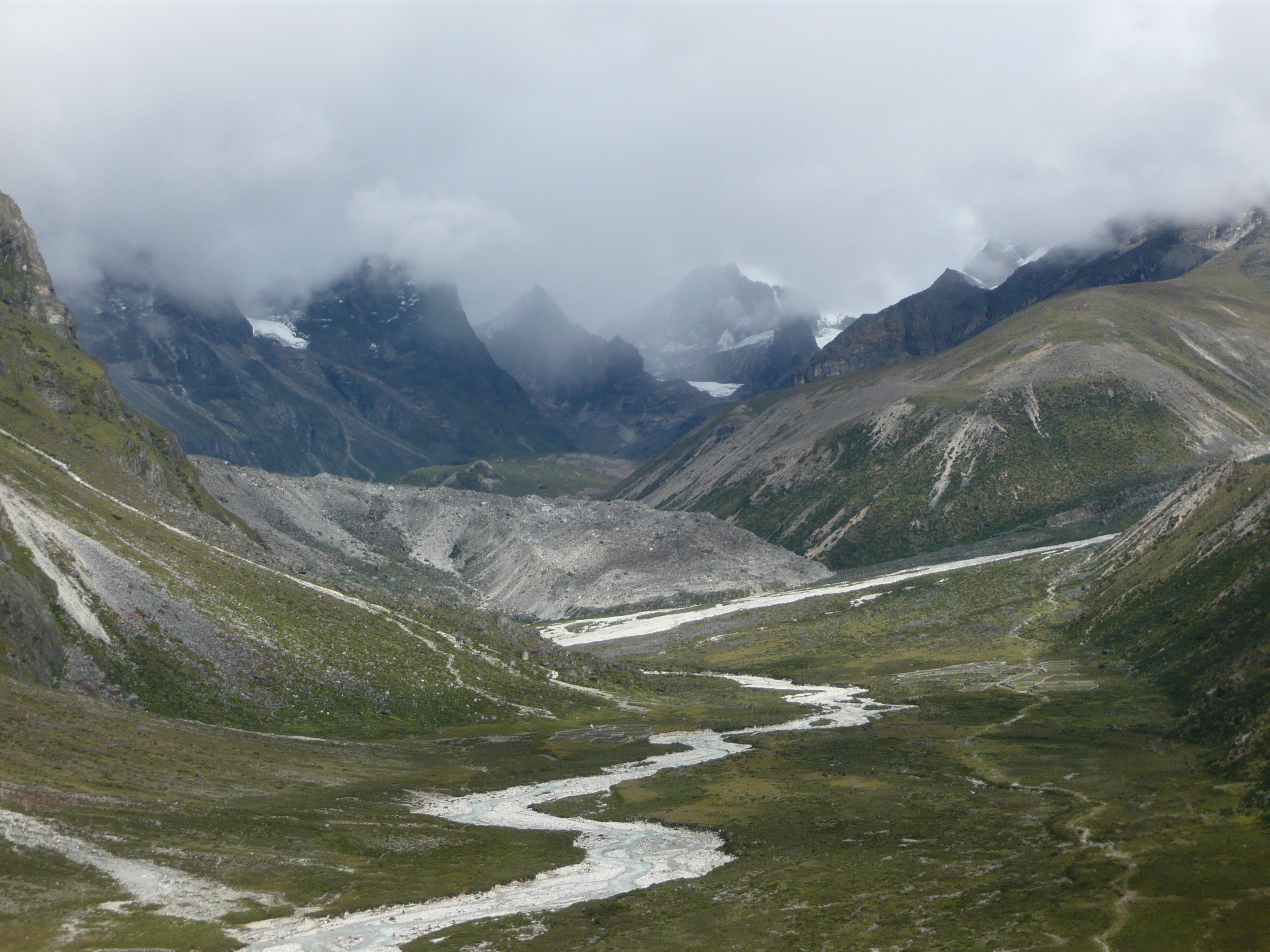 Ben - So, just as predicted, you had to go to the toilet far more often. And this, Andrew Murray was saying, is to do with balancing your body's pH. We're you able to do any experiments to prove this?
Ben - So, just as predicted, you had to go to the toilet far more often. And this, Andrew Murray was saying, is to do with balancing your body's pH. We're you able to do any experiments to prove this?
Laura - Yes. We actually did measure the pH of our urine and there was quite an interesting effect. Whereas with your oxygen level and your heart rate, there's sort of a steady increase and decrease while you're travelling. With this, it was more that the alkalinity of urine would shoot up when you made a jump in altitude, when you went up a long way, and then very quickly, it would drop back down again to a normal level. And then as you went up again, it would shoot back up and then drop all the way down again.
Ben - Fascinating stuff. You are in many ways very close to reaching base camp. We will find out later in the show if you actually made it. By this point, the views must have been incredible. And there must've been quite a drive to get there.
Laura - Yes. It really is a spectacular place. If anyone ever gets a chance to go there, I'd recommend it. I've never seen like it before in my life and I'd love to go back.
________________________________________________________________________
Ben - Now, we go back to Laura Soul to find out if she made it all the way up to Everest base camp.
Laura - Yes, we did. Everybody in the group got all the way up there.
Ben - How did you feel when you got there?
Laura - Immediately when I got there, not that great because it was very difficult to get up there on that day. It was a very long walk. We'd been walking all day by the time we reached base camp. So, I was exhausted, I had a splitting headache and I just wanted to lie down on the floor really. But once you'd got over your initial exhaustion, you could stand there and look around you and sort of take in what you'd achieved and just look at what was around you to.
Laura - It's good to sit down. I have a massive headache and so do most people. I felt a bit sick on the way up, but I'm okay now. Some people feel very sick. The view from here is absolutely amazing. You can see the Cumbu ice fall which is really beautiful with these huge big jagged peaks of ice. It's been very hard work to get up here but I'd say that it was definitely worth the climb.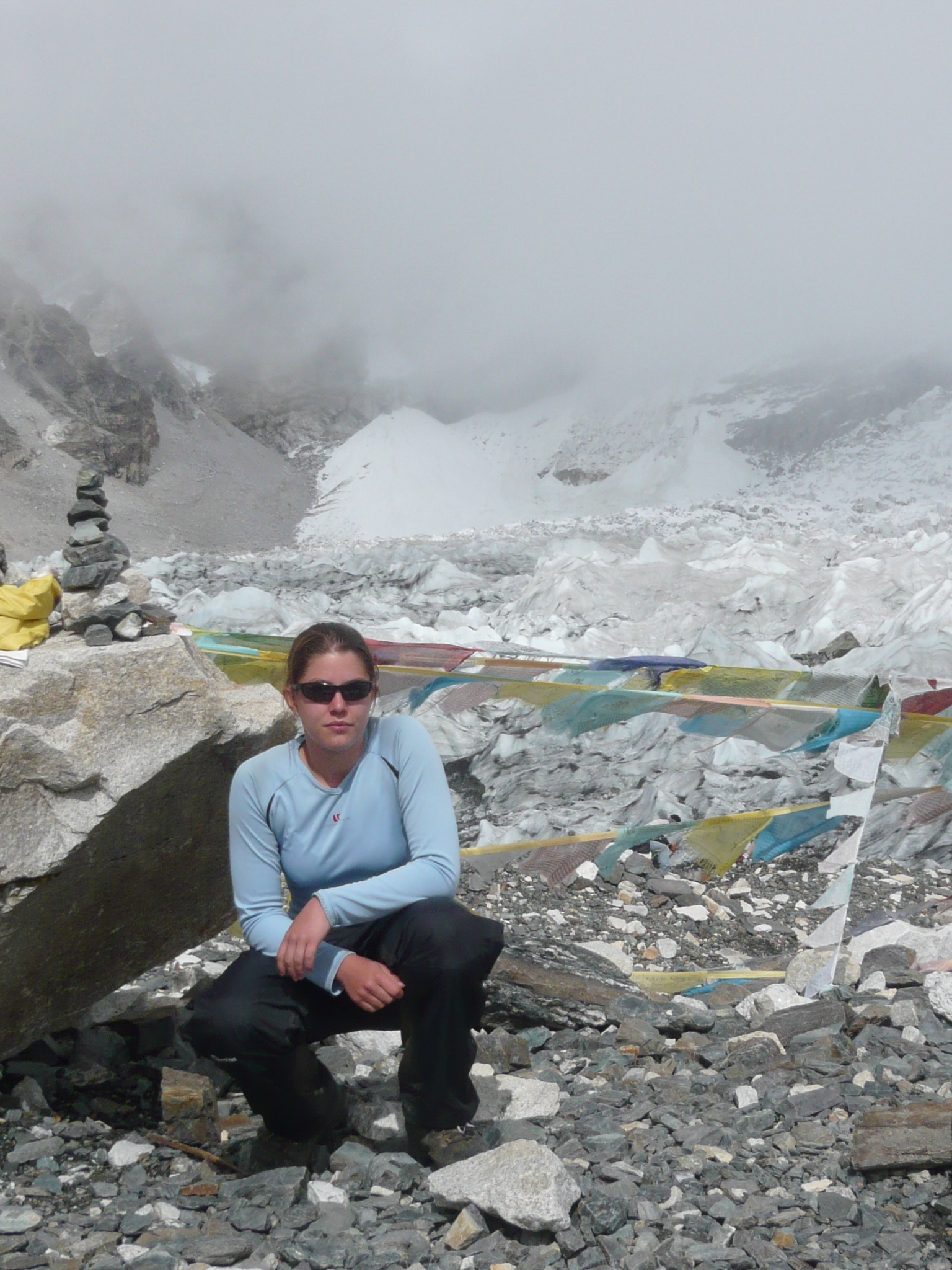
Ben - Well you do certainly sound exhausted, but that must be a day that will stick in your memory forever. But thinking back to the experiments you were doing on yourself, what was your heart rate and blood oxygen like that day?
Laura - Well it had really dropped down then. I mean, my oxygen level was 79% of what it usually is which is very low and our heart rates were also above 100, above 110 in some cases.
Ben - And how long did you actually manage to stay there? How long did you stay at base camp?
Laura - I think we were probably there for about an hour or an hour and a half in total.
Ben - And it must have felt nice to start coming back down.
Laura - Yes. When we began descending, it was quite a relief.
Laura - We're back down at Namche Bazaar now at 3,440 meters. My blood oxygen level is back up to 94%. The difference between how I felt on the way up here and how I feel now on the way down is absolutely huge because I have acclimatized to higher altitudes. So now, it's easier to breath here than it was on the way up. Everyone is just really full of energy. Even though we walked in one day, what took us four days on the way up.
Ben - Well, thinking back to what Andrew Murray was saying earlier and the experiments that you've done, one thing that we haven't talked about yet is the sense of smell. So what happened?
Laura - So yes. I definitely noticed that my sense of smell wasn't as good particularly because I couldn't smell myself or any of my trekking companions, nor could I smell the many yaks that were there.
Ben - How do you go about measuring your sense of smell? Surely, it can't be 'stand a certain distance from a yak'?
Laura - No, unfortunately. Well I used the University of Pennsylvania's smell identification tests, that we got from a company called Sensonics. So basically, it's four little booklets and they're kind of a scratch and sniff type things. So you go through with a pencil, scratch them off and you choose which thing you think it smells most like. Basically, the more that you get right, the better your sense of smell is. I've got one here actually, if you want to have a smell and some of them are quite potent.
Ben - So, this really is just a little scratch and sniff booklet. We have to scratch it with a pencil. I'm being told that this odour should smell like lilac, chilli, coconut, or whisky. So I'll give it a scratch. I actually find that quite hard to tell. It could be lilac or it could be coconut. What does that tell me? How do I use this scratch and sniff to tell me how good my sense of smell is?
Laura - Basically, you cross off the answer that you think it smells most like with the tests they give you and then a booklet that tells you the actual answers, what it's actually supposed to smell like. So, if you've got it right, then you got a point and then the more points you get, the better really.
Ben - I assume they aren't all pleasant things like lilac and coconut.
Laura - No. Sadly, some of them are quite unpleasant. There's onion, there's motor oil, there's paint thinner. It wasn't a pleasant experience completing these halfway of a mountain.
Ben - All in the name of science and we did find evidence to back up what Andrew Murray was saying that your sense of smell appears to decrease with altitude.
Laura - Yep, definitely.
Ben - So, it was obviously a fantastic experience. Did everybody else that you climbed with enjoy it as much as you did?
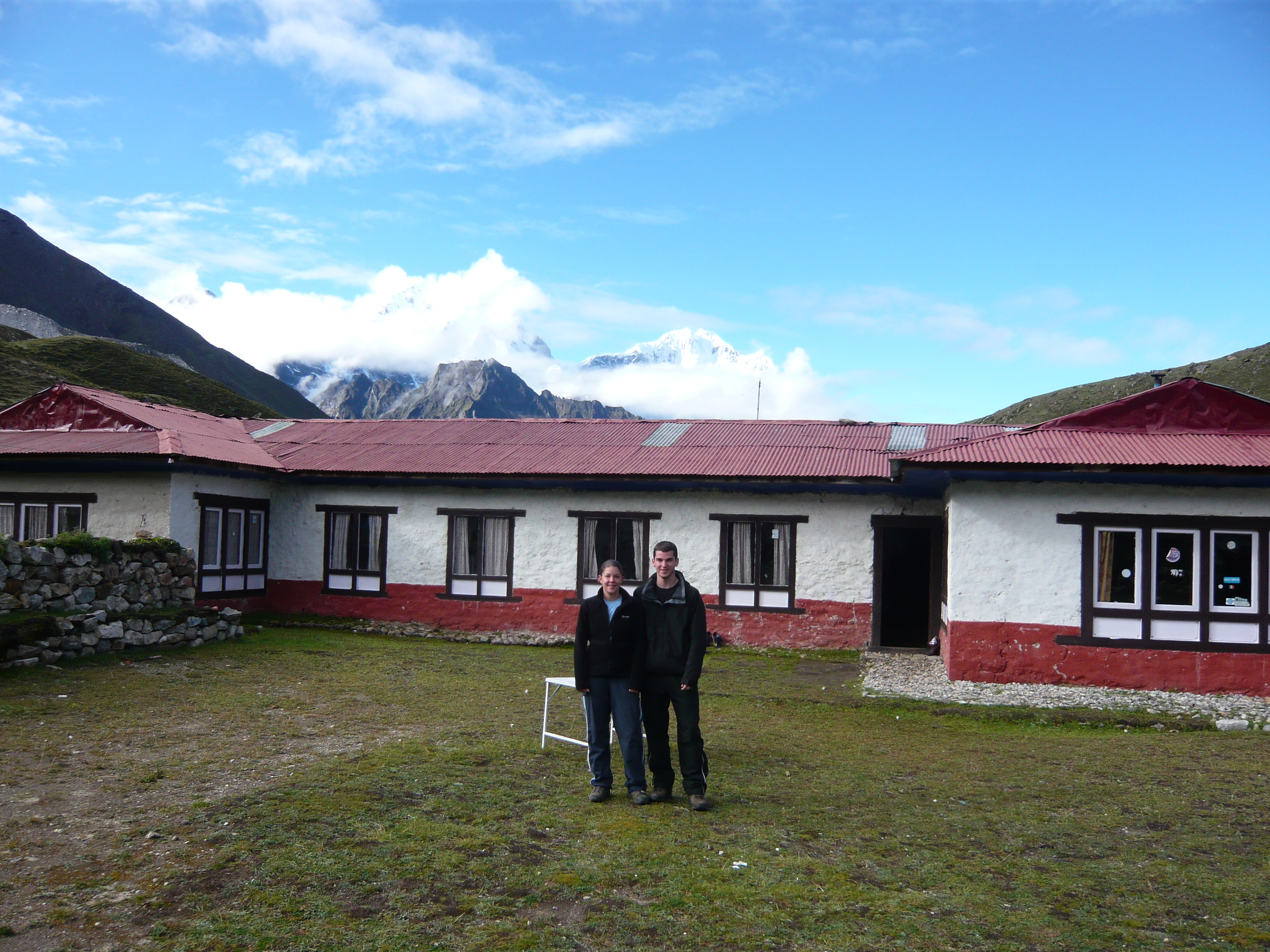 Laura - I think in the end, everybody probably enjoyed as much as I did but there was a very wide variety in the way that people responded to going up that high. To find out how some of the others had felt, now that we were further back down after we've been to base camp, I first of all spoke to Nikki Scott.
Laura - I think in the end, everybody probably enjoyed as much as I did but there was a very wide variety in the way that people responded to going up that high. To find out how some of the others had felt, now that we were further back down after we've been to base camp, I first of all spoke to Nikki Scott.
Nikki Scott - I am feeling a lot better. You can definitely tell that there's more oxygen even though we're still over to the half thousand meters above sea level.
Laura - Did you notice any difference in your sleeping pattern?
Nikki Scott - Generally, I slept quite well, but yeah, definitely I was going back and forth to the bathroom a little bit more. But apart from that, I was actually okay with altitude.
Laura - Nikki actually got off very lightly but not everyone was so lucky. I also spoke to Steph Shay.
Steph Shay - Basically, the whole way up, I had a slight headache and the higher up we got, the worse the headache got, to the point where, yeah, I couldn't function that well. Going to the bathroom, I needed to pee a lot more than usual. Another thing that I did find was when I was trying to sleep, I found it really hard to breath. I had a really heavy chest, tight chest. I think that was about it - I got sick, stomach sick. Probably yeah brought on by altitude as well.
Ben - So a real variety of reactions but I'm guessing that everybody was equally thrilled with the experience.
Laura - Yes, definitely. I think everyone certainly felt that it was worth it and a few people raised a lot of money for charity as well. In fact this sort of adventure makes people feel charitable and I'd like to say thank you to Sensonics who gave us the smell identification tests, pH health who gave me the urine alkalinity testing sticks and also to Proact Medical who lent me the pulse oximetre for my trip.
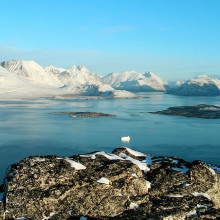
33:03 - Continental Collisons and Carbon Dioxide
Continental Collisons and Carbon Dioxide
with Dr Dennis Kent, Rutgers University
Kat - Now, you're probably aware that different continents shuffle around. Some slowly colliding while others pull away. And you may also probably know that this the process that leads to the production of mountain ranges and can lead to devastating earthquakes. But you may not have realized that this same process might have been responsible for a global shift in temperature, plunging us into an ice age. Now to find out more, we're joined by Dennis Kent who's over at Rutgers University in the US. So hello, Dennis.
Dennis - Hello.
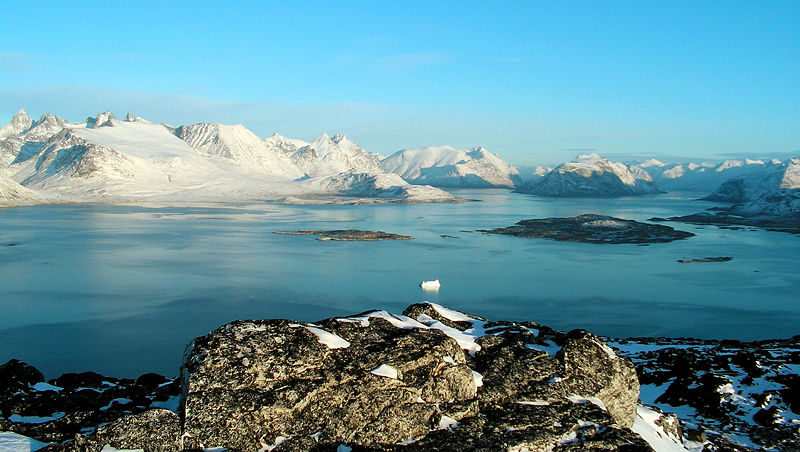 Kat - How's things over in the US?
Kat - How's things over in the US?
Dennis - Not too bad, climate wise - weather wise is cold.
Kat - Excellent. Now let's talk about some of these climate changes. Tell us very briefly how the climate has changed over say, the past 100 million years?
Dennis - Well, over the last 100 million years, it started out being very warm and there was a transition about 35 million years ago to development of ice sheets first in Antarctica. And later, more recently, in the last few million years, the ice sheet in Greenland and every now and then during this current ice age, enveloping some parts of Scandinavia, Great Britain, of course, much of North America.
Kat - So, we're actually kind of in an ice age now, technically?
Dennis - Most definitely.
Kat - Definitely as well as technically. Now, looking back again, sort of 100 million years ago, what did the world look like? Were the continents were in the shape that we know them today?
 Dennis - The continents were in quite different places and even prior to 100 million years ago, they were lumped together in what we call Pangaea, a giant landmass that extended virtually from pole to pole. That drifted apart starting about 180 million years ago. Then about 100 million years ago, the continents were quite well dispersed and then started the process from dispersion into collision. And so, the last 100 to 150 million years, the continents were recoalescing in part.
Dennis - The continents were in quite different places and even prior to 100 million years ago, they were lumped together in what we call Pangaea, a giant landmass that extended virtually from pole to pole. That drifted apart starting about 180 million years ago. Then about 100 million years ago, the continents were quite well dispersed and then started the process from dispersion into collision. And so, the last 100 to 150 million years, the continents were recoalescing in part.
Kat - So, we've established that the continents kind of drifted apart and now, they're drifting back together and crunching together. But how is this related to climate change? Surely it's just, continents crushing into each other. How can that affect the climate?
Dennis - Well, the mechanism that we've been thinking about is looking at sources of CO2 and assuming that the long term changes in climate are due to different levels of CO2 in our atmosphere. Some of the main sources of CO2 is ocean spreading ridges and then also, in so-called subduction zones where the ocean floor is being subsumed. Our idea is that the amount of CO2 produced in ocean ridges stays more or less constant at kind of a background level. But the main variation in CO2 production is in subduction zones. And it's in those zones, it's the character of the sediment that enters into them.
Kat - So, one of the areas you've studied is basically where India has kind of crunched into Asia. What do you think is going on there?
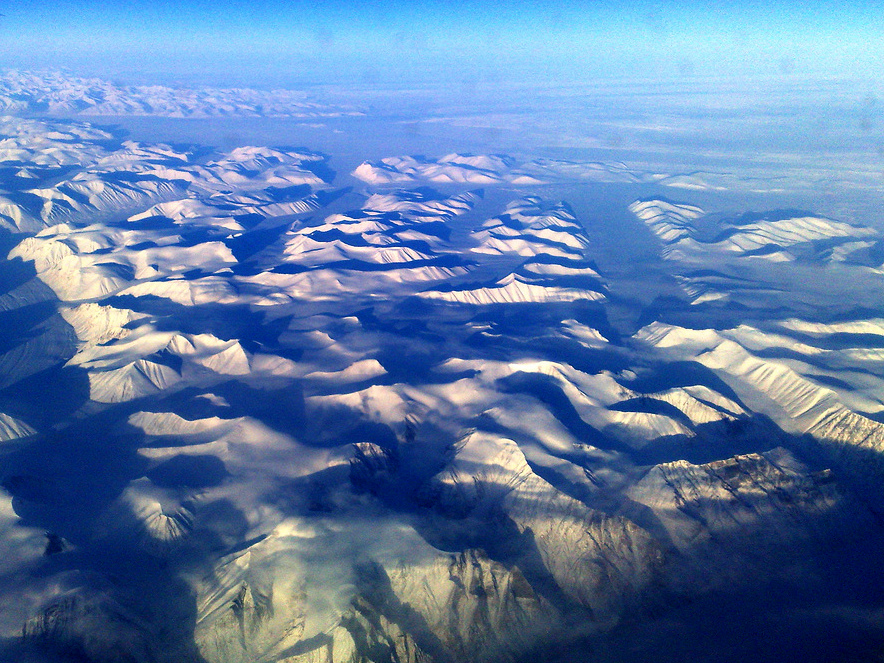 Dennis - Yes. That's a critical area for two reasons. One, it was a place where several thousands of oceanic crust was subducted under Asia as India made its migration from the southern hemisphere to the northern hemisphere. And importantly, the ocean crust that was being subducted had to go under the equatorial belt which was a locus of carbonate production by microorganisms like foraminifera living in the water column. And preferentially, being along the equator, it was warm, there's also some nutrients from upwelling waters. They drop down on to the ocean floor and then were subducted, and it's this decarbonation in the high temperatures and pressures of a subduction zone that release CO2 and that then caused a warmer climate until that factory shut down.
Dennis - Yes. That's a critical area for two reasons. One, it was a place where several thousands of oceanic crust was subducted under Asia as India made its migration from the southern hemisphere to the northern hemisphere. And importantly, the ocean crust that was being subducted had to go under the equatorial belt which was a locus of carbonate production by microorganisms like foraminifera living in the water column. And preferentially, being along the equator, it was warm, there's also some nutrients from upwelling waters. They drop down on to the ocean floor and then were subducted, and it's this decarbonation in the high temperatures and pressures of a subduction zone that release CO2 and that then caused a warmer climate until that factory shut down.
Kat - So the idea is, there is all this little sort of plankton and things on the seabed are then getting squished up in releasing their CO2 into the atmosphere. Would that have really been enough to cause a massive global climate change, sort of the end of the last ice age?
Dennis - Well, actually that was what was sustaining and making the climate warmer. And it was the absence of that, that I think contributed to a shift in CO2 levels in the atmosphere to lower values as it equilibrated with lower amounts of CO2 being injected into it. And so, this was the time at which India collided with Asia of course, is when the factory shut down. That happened 50 million years ago and it's at precisely of this time that the world's climate started to deteriorate.
Kat - And so, is this kind of process still happening today? Is there another region that we think might start releasing lots of CO2 and could again change the climate?
Dennis - Well, eventually but right now, there's very little old carbonate sediment that's being subducted, just under the Central America actually. And so, the amount of CO2 from this source at least has not really increased, nor does it look like there's prospect of it increasing anytime in the near future.
Kat - And what kind of things are you and your group are looking at at the moment? Where do you go next now you've discovered probably this crunching of India into Asia has released CO2? What more are you doing to understand the process?
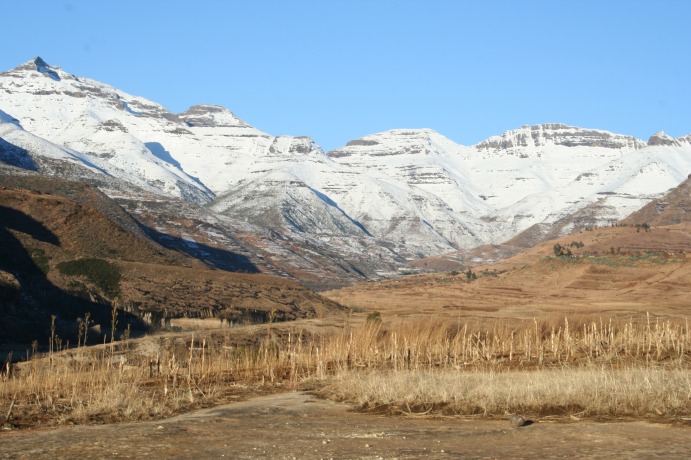 Dennis - Well, what led up to it is occupying a little bit of our time because over the cretaceous or this period about 100 million years ago until the factory stops at 50 million years, the cretaceous had climates that were hardly even warmer within the year 50 million years ago, until the crunch. So, we're looking at a more detail at how much carbonate sediment was subducted then. That's when these are coincidences or perhaps some other reasons that the development of microorganisms that live in the water column, they secrete calcium carbonate actually became prolific at about the time that India started moving north. So, it's this kind of unique circumstance that contributed to the very warm climates from the 100 to 50 million-year interval.
Dennis - Well, what led up to it is occupying a little bit of our time because over the cretaceous or this period about 100 million years ago until the factory stops at 50 million years, the cretaceous had climates that were hardly even warmer within the year 50 million years ago, until the crunch. So, we're looking at a more detail at how much carbonate sediment was subducted then. That's when these are coincidences or perhaps some other reasons that the development of microorganisms that live in the water column, they secrete calcium carbonate actually became prolific at about the time that India started moving north. So, it's this kind of unique circumstance that contributed to the very warm climates from the 100 to 50 million-year interval.
Kat - Absolutely fascinating stuff. Well, thank you very much. That's Dennis Kent from Rutgers University in the US, explaining how continental collisions cause a change in the amount of CO2 from the seabed released into the atmosphere. And then when it stops, it leads to the ice age that we are now in.
Should you take sedatives at altitude?
Ben - No. Your heart rate will go up for a reason to make sure that you're pumping enough oxygen around. If you take something like a sedative, that will reduce your heart rate then you're not going to have enough oxygen in your tissues.Kat - I think it would also maybe mean that you sort of notice less things that you should notice that you might need to take into account and might need to, "Oh, I need to seek some medical help."Ben - And need to descend. Yes, of course.
If a baby is born in the death zone, will it breathe slower at low altitudes?
Kat - I think you're asking for trouble here really.Ben - I think the oxygen demands of giving birth are probably a bit too much to be able to successfully do it when there's just not enough oxygen up in the death zone, so I'm not sure. And I think that it means that the baby in the process would get far less oxygen than it needs. I don't think this would work very well at all.Kat - So maybe, it wouldn't even make it out alive.Ben - It's quite possible.Kat - What a morbid question! Thank you very much.It's worth noting that foetal haemoglobin has a higher affinity to oxygen than the 'normal' haemoglobin we use after birth - maybe a baby would be okay in the death zone after all?If you know, get in touch!
52:26 - How do spiders make webs?
How do spiders make webs?
We put this question to Todd Blackledge, Associate Professor of Biology at the University of Akron:"Surprisingly, despite how elegantly symmetric orb webs are, they don't have a map of the shape of the web. Instead, they have genes that control how they move individual legs as their manipulating silk thread and how to interconnect silk threads. It all starts off with a bridge thread. So a spider can suspend its web in mid air by releasing a very lightweight silk thread until it snags on something such as a tree on the other side of the trail you're walking on. That bridge thread then forms the core of the web. The spider is able to move out and begin to build an outer framework for the web, at the same time as it establishes what are called the radial threads, those you can think of as the spokes on a wagon wheel. And then once this framework is done, the spider then produces a temporary spiral, so it starts at the centre of its web and this temporary spiral acts as a physical guide for the spider to then spin the final gluey capture spiral. And the spider starts at the outside of the web, follows that temporary spiral and essentially paints itself into a corner in the centre of its web. They actually use their legs to measure the distances. So if you watch an orb spider spinning its web, it's reaching out with one set of legs to touch the temporary spiral and then using its hinds legs to then position the sticky spiral. So spacing between rows of silk is going to change as the spider matures and the length of its legs grows longer and longer."
Why are background radiation levels so much higher in Germany than the UK?
Kat: - We spent some time looking at geological maps of Germany in the UK and our conclusion is that a lot of Germany is made of granite and granite releases a radioactive gas called radon. But the UK isn't completely bereft of radioactive rocks. A lot of Cornwall, a lot of Wales, quite a lot of the Pennines and some of the Peak district and of course, Edinburgh is made of granite and does release radon. And there was some research I think a couple of years ago that showed that people Cornwall are actually getting quite a significant dose of radioactivity that does increase the risk of lung cancer in these areas. And in fact, if you smoke and live in places like Cornwall that are very granity, that's actually a much more significant impact on your cancer risk than if you just live there and didn't smoke. So, if you live in Cornwall or anywhere that looks a bit granity, then don't smoke. But as to whether the background radiation is higher in Germany versus the UK, it really depends where you live. If you live in a very granity bit of Germany, yes it will be higher, but if you live in a very granity bit of the UK compared to a non-granity bit of Germany then obviously, it will be higher in the UK.
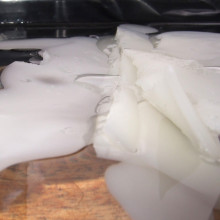










Comments
Add a comment